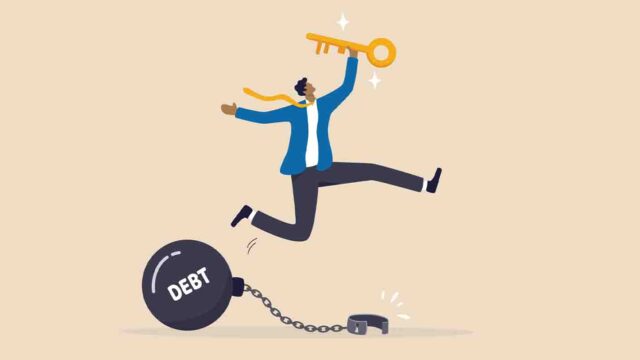Debt repayment strategies: How to climb out of debt
A debt repayment strategy will help you map out a realistic plan to chip away at your debt.

If you have ever been deep in debt, then you know it feels like running around in circles. You pay off a little to this digital loan, a little to the bank, and some more to a friend you owe. Eventually, it feels like you are getting nowhere. But it doesn’t have to feel like that, not if you have a debt repayment strategy that helps you map out a realistic plan to chip away at your debt. The aim of the plan is to help you climb out of debt so that you can stop feeling overwhelmed and feel like you’re moving in the right direction.
Use these three methods to dig yourself out of debt.
The Snowball method
The snowball method encourages people to pay off debt by balance, starting with the lowest first. Regardless of what the interest rate is on those balances, plan to pay off the debts from the smallest to the largest amount. When it comes to paying credit balances, ensure you make the minimum payment due for all loans and direct any amount left over to the smallest balance. When you finish paying that off, do not be tempted to take out another loan because the point is to stop increasing your debt. So, if, for example, it was a Timiza or Tala loan, delete that app or stop using it completely.
The next step is to take the amount you were paying and apply it to the next smallest loan. As you move down the list, the amount you are able to pay on each loan continues to grow (as you continue paying down your debts), creating what is known as the snowball effect.
Pros of the method
- Easy to follow: You simply need to know the balance of each loan and rank them in priority.
- Motivating: Paying off the smaller debts gives you a sense of accomplishment and motivates you to stick to your plan.
Cons of the method
- Paying more: Since you are concentrating on small debts, you could end up paying more in interest over time.
- May take longer: The loans with higher interest rates may accrue, taking you longer to repay.
The Avalanche Method
The Avalanche method is almost similar to the Snowball, but instead of starting with the smallest loan amount, begin with the costliest or the one with the highest interest rate. But, as you make your list of debts from the largest to the smallest, don’t forget to make minimum payments on each and then devote the remaining funds to the loan with the highest interest rate.
With this method, once the debt with the highest interest rate is paid off, move on to the next high-interest rate-bearing loan, using the extra repayment funds. Continue making payments to the next loan until all the debts are cleared.
Pros of the method
- It reduces the total interest rate you will have to pay.
- Making consistent payments reduces the time it takes to get out of debt.
Cons of the method
- It may make a debtor feel they aren’t making any progress since the aim is to pay off the interest rates rather than the balances.
- It requires discipline and consistency. This may be difficult to maintain, especially if one’s financial situation changes.
The Debt Consolidation Method
In simple terms, this means you can merge all your existing loans into a single account.
Most banks or Saccos allow debtors to combine multiple debts, especially ones with high interest rates, into a single lower-interest loan to simplify payments and reduce interest rates.
This is how it works. You’ll apply for a specific amount of money, usually just enough to pay off what you owe. Once the lender has approved, they will pay directly to the creditors the amount you owe to each. So, now all of you have to do is pay the consolidated loan – the agreed monthly instalments – over a specified period.
Pros of the method
- You might potentially pay your debt at lower interest rates.
- You will be financially organised since your debt will be simplified.
- Depending on the period given, you may pay the debt faster.
Cons of the method
- You could risk paying more interest in total if given a longer repayment term.
